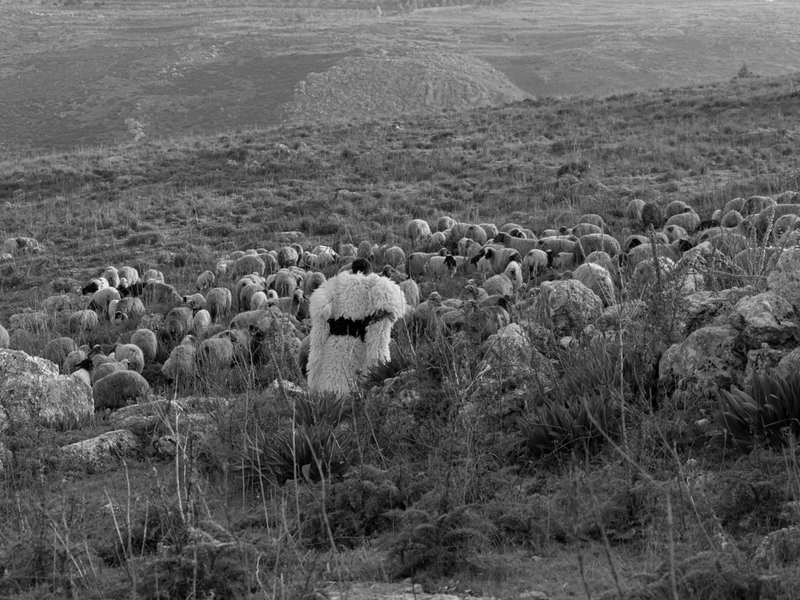→ Land of Wool
Adrian Pepe
The importance of craft lies in a bodily engagement with materials as they are sourced and transformed. When we practice and perform ancient craft processes, we immerse ourselves in a space of reenacting histories and rituals, leading to meditative flow states achieved through recursion and repetitive motion. This awakening connects us to a primal, dormant instinct that allows for a deeper understanding of our bodies in nature and taps into an ancestral memory of finding simplicity within complexity. In textile artistry, the act of applying structure to raw fibers connects artisans to a wider ecosystem, where the soil gives birth to the grass that nourishes the sheep that grow the wool. It is an intentional thread that weaves humans to the earth through a choreography that has endured for millennia. As a result, a renewed sense of responsibility is forged as we internalize these relational ties as muscle memory.
Take, for example, the Awassi sheep, also known as Ausi, Baladi, or Na’ami. This sheep has played a significant role in human history, being bred in the Western Asia region for more than five thousand years. Its importance encompasses the material and craft cultures of a specific place and time, ritualistic practices in Abrahamic religions, and the formation of the first city-states in the region.
The contribution of the Awassi sheep within the context of the first urban settlements in Western Asia was incredibly diverse and invaluable. While alive, the sheep provided sustenance and abundant raw materials through its milk, wool, and manure, which was used for fertilizing the land. After its death, every part of the sheep’s biomass was utilized, from its meat and the tools made from its skin, bones, and sinew to the creation of paper, leather, glues, garments, containers, musical instruments, weapons, and more. These applications paved the way for numerous specialized craft sectors in society, transforming animal remains into objects of functional, cultural, and ritualistic significance. Consequently, the Mesopotamia region became known as the birthplace of wool. Wool, initially used as a form of exchange, later facilitated the development of a market economy and global trade across expanding networks. Today, we can still witness remnants of this dynamic period of exchange and expansion in the form of political boundaries, economic systems, carpets, clothes, colors, motifs, and symbols.
However, over the past few hundred years, with the advent of industrialization and globalization, we have observed a decline in craft practices and, subsequently, a decrease in the usefulness of the Awassi sheep’s materiality in society. Once a medium of rudimentary exchange or currency for ancient civilizations, it challenged the modern idiom that “money doesn't grow on trees” by showing that it can grow on sheep. Today, the abundant resources provided by this gifting zoomorphic tree, in the form of wool, have lost their meaning and value. Large quantities of the once coveted biomass of the Awassi sheep in Western Asia are now continuously discarded due to the lack of demand, leading to the gradual disappearance of indigenous forms of production from our collective memory. This raises an important question: What is the relevance of this indigenous knowledge base in today’s world?
Adrian Pepe is a Honduran-born fiber artist presently residing in Beirut, Lebanon. His artistic practice is an ongoing exploration of process and material. In his work, Pepe combines elements of nature and culture to create objects that serve as tools for fostering an open discourse on materiality, our ever-evolving cultural landscape, and our present condition.
